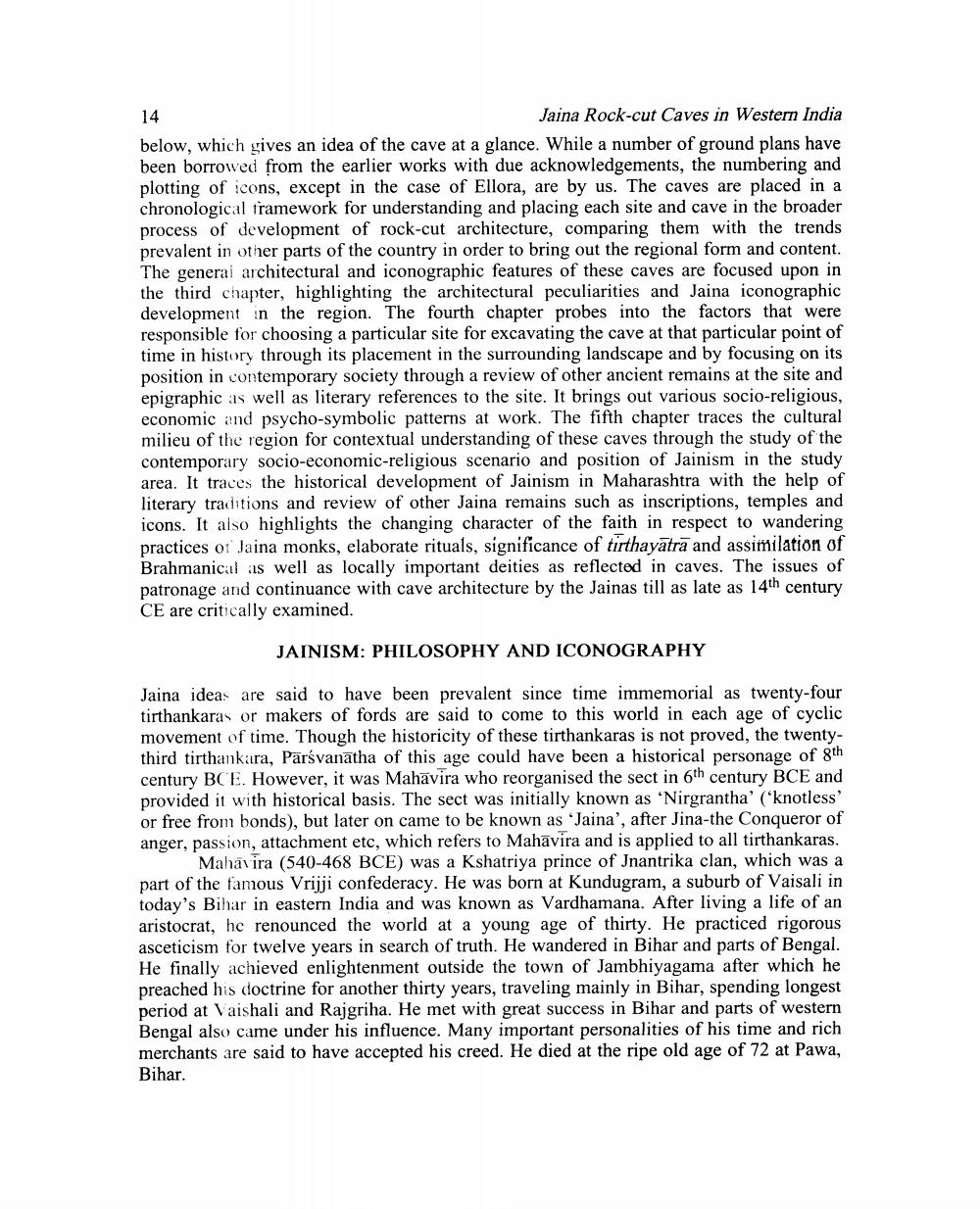________________
Jaina Rock-cut Caves in Western India below, which gives an idea of the cave at a glance. While a number of ground plans have been borrowed from the earlier works with due acknowledgements, the numbering and plotting of icons, except in the case of Ellora, are by us. The caves are placed in a chronological framework for understanding and placing each site and cave in the broader process of development of rock-cut architecture, comparing them with the trends prevalent in other parts of the country in order to bring out the regional form and content. The general architectural and iconographic features of these caves are focused upon in the third chapter, highlighting the architectural peculiarities and Jaina iconographic development in the region. The fourth chapter probes into the factors that were responsible for choosing a particular site for excavating the cave at that particular point of time in history through its placement in the surrounding landscape and by focusing on its position in contemporary society through a review of other ancient remains at the site and epigraphic as well as literary references to the site. It brings out various socio-religious, economic and psycho-symbolic patterns at work. The fifth chapter traces the cultural milieu of the region for contextual understanding of these caves through the study of the contemporary socio-economic-religious scenario and position of Jainism in the study area. It traces the historical development of Jainism in Maharashtra with the help of literary traditions and review of other Jaina remains such as inscriptions, temples and icons. It also highlights the changing character of the faith in respect to wandering practices or Jaina monks, elaborate rituals, significance of tirthayātra and assimilation of Brahmanical as well as locally important deities as reflected in caves. The issues of patronage and continuance with cave architecture by the Jainas till as late as 14th century CE are critically examined.
JAINISM: PHILOSOPHY AND ICONOGRAPHY
Jaina ideas are said to have been prevalent since time immemorial as twenty-four tirthankaras or makers of fords are said to come to this world in each age of cyclic movement of time. Though the historicity of these tirthankaras is not proved, the twentythird tirthankara, Parsvanātha of this age could have been a historical personage of gth century BCE. However, it was Mahavira who reorganised the sect in 6th century BCE and provided it with historical basis. The sect was initially known as 'Nirgrantha' ('knotless' or free from bonds), but later on came to be known as 'Jaina', after Jina-the Conqueror of anger, passion, attachment etc, which refers to Mahāvira and is applied to all tirthankaras.
Mahavira (540-468 BCE) was a Kshatriya prince of Jnantrika clan, which was a part of the famous Vrijji confederacy. He was born at Kundugram, a suburb of Vaisali in today's Bihar in eastern India and was known as Vardhamana. After living a life of an aristocrat, he renounced the world at a young age of thirty. He practiced rigorous asceticism for twelve years in search of truth. He wandered in Bihar and parts of Bengal. He finally achieved enlightenment outside the town of Jambhiyagama after which he preached his doctrine for another thirty years, traveling mainly in Bihar, spending longest period at Vaishali and Rajgriha. He met with great success in Bihar and parts of western Bengal also came under his influence. Many important personalities of his time and rich merchants are said to have accepted his creed. He died at the ripe old age of 72 at Pawa, Bihar.




